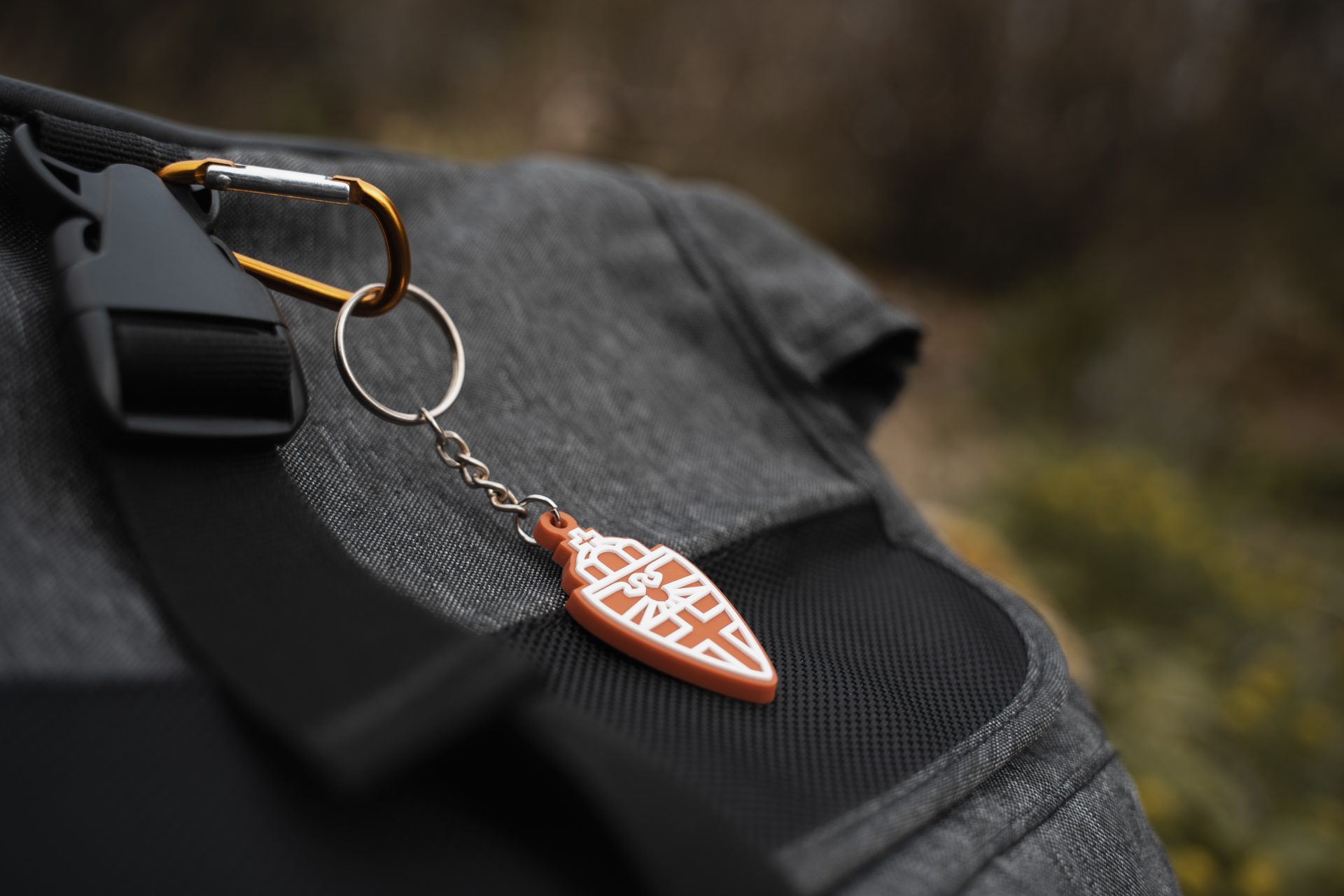The myths surrounding the professors’ walking club
-
 Foto: Johannes Fiebig
Foto: Johannes Fiebig
For seventy years, Radboud University has had a walking club for professors. Outsiders call it an old boys’ network where major decisions are made, but insiders say it’s just an informal hobby club. ‘The University is really not run from the walking club.’
New Vox
This story is part of the new Vox, which can be found on campus this week. In this Vox we dive into the history of the 100-years old university and look towards its future.
It was about nine years ago: Professor of Economics Esther-Mirjam Sent was drinking coffee on a Saturday afternoon on the terrace of Tante Koosje on the Berg en Dalseweg, when she saw a group of male hikers walk in. She recognised several Radboud University professors, and a member of the Executive Board.
Sent soon realised that this was most probably the famous professors’ walking club a fellow professor had once told her about. A few of the hikers whom Sent knew seemed a bit embarrassed when they recognised her. ‘I’d already said previously that I thought this kind of club was out of date,’ she says.
Mysterious answers
More on Sent’s criticism of the professors’ walking club later. Its existence is an open secret at Radboud University. In my five years as Vox editor, the club has come up a few times in the margins of an interview, so I know some of the members’ names. But when I send them a request for an interview, I get a series of mysterious answers back:
‘I am indeed a member of the walking club. I enjoy it very much, by the way, but I’ve also promised not to talk about it too much.’
‘The walking club cherishes a tradition of confidentiality. In the public domain, people usually pretend that the walking club doesn’t exist.’
One member even tried to convince me not to write a piece about the walking club: ‘[…] there has been some sort of myth that sometimes makes this particular club look like a secret and powerful union. If an […] article were to be published about it, this myth would only increase.’
Willing
Fortunately, not everyone turned me down. Charles de Weert, Professor Emeritus and former Dean of Social Sciences, was willing to tell me more about the club’s history and organisation. ‘I also don’t advertise the fact that I’m a member,’ he says. ‘But I do think it’s important to dispel a few myths.’
Hub Hennekens is also open to a chat. The 84-year-old Emeritus Professor of Constitutional and Administrative Law and former member of the Council of State has been a member of the walking club since 1991. He says he hasn’t regretted it for a second. ‘When I’m buried, I hope my walking brothers and sisters will attend my funeral,’ he says.

Special bond
Walking club de Vogelstruys, named after the eponymous café in Maastricht, was founded on 17 October 1953. The eight founding fathers included professors Willem Asselbergs (better known under his pseudonym Anton van Duinkerken), Bernard Hermesdorf, and Sipke Geerts. The club’s motto, ‘We have no obligation to care about the impression we make’, still seems relevant 70 years after its foundation.
‘Every fortnight we go for a walk in the Nijmegen area,’ says De Weert. They start out with coffee and cake at one of the members’ homes, followed by a two-hour walk in the woods near Beek or Plasmolen, or in the Ooijpolder. They end the day off with a beer at the pub, after which everyone goes home. One of the members creates an annual calendar – that’s the extent of the administration. Drinks and food are paid for by the club members themselves; there is no annual membership fee.
Recent events
During the walks, says Hennekens, members mostly talk about recent events. ‘This is how you stay abreast of what’s going on at the university. Not just at your own faculty, but at all the faculties. When I joined the Council of State in 2001, I moved to The Hague for seven years. Whenever I could, I came to Nijmegen on Saturdays. It was important for me to know how things were developing here.’
‘As you think, reason, and talk, you come closer together’
When people talk, they often sit facing each other, Hennekens explains. ‘But that doesn’t mean they are really speaking with each other. When discussing a problem on a walk, you both look in the same direction. As you think, reason, and talk, you come closer together. This creates a special bond, which is hard to put into words.’
Looser etiquette
Has he seen the walking club change? Hennekens thinks for a moment. ‘No more than the world has changed,’ he says. ‘In the early days, we still walked in suits, that was the standard for professors back then,’ he says. He laughs: ‘But when you see what some professors wear these days, they might as well be students.’
Even at the annual dinner, which the members’ partners are also invited to, etiquette has loosened up. ‘It used to have to be a six or seven-course meal, but that has loosened up a bit,’ says Hennekens. Nevertheless, official table arrangements are still made, and there is always a good bottle of wine on the table. During dinner, all members are expected to wear their tie, featuring an ostrich. Female members wear a pin. ‘Those who fail to do so are called out on it.’

Retreat
Once a year, on Palm Sunday, the members of the walking club go on a retreat. De Weert explains how this tradition came about. ‘In the early days, there were several priest professors in the walking club,’ he says. ‘During Lent they were not allowed to eat too much, which was not to everyone’s liking. But that rule applies only within one’s own diocese.’
Therefore, members walked a little further one weekend a year, out of the ’s-Hertogenbosch diocese. Previous walking club weekend retreats took place in the Ardennes, South Limburg, Zierikzee, and Texel. Last April, the hikers went to Roermond. During such weekends, members attend a mass celebration, there is a big dinner, and often a cultural outing.
For life
The walking club currently has 30 members: 16 professors and 14 emeriti. Each of the University’s seven faculties provides two or three active professor members. In addition, the walking club has a group of emeriti, which is growing in size in line with increasing life expectancy. Membership is for life.
The procedure for becoming a member has been the same for 70 years, explains De Weert. A person who become emeritus member puts forward a successor from their own faculty. ‘Their proposal is considered,’ says Hennekens. ‘If a member of the walking club doesn’t get along with the proposed candidate, another professor is sought. But the number of publications someone has to their name, for example, isn’t a factor.’
Incidentally, De Weert says, there are also quite a few people who kindly turned down the invitation to join. ‘When you’ve got young children, it’s not easy to go out once a fortnight. That’s why our youngest member is over 45.’
Typical network organisation
This form of co-optation, combined with the fact that for a long time the club consisted solely of men, led to lots of wild stories circulating about the walking club. It was rumoured to be an association where important decisions about the University were taken, such as who would be the next rector. Current members also include several former deans, a former rector, and a current member of the Executive Board. Approximately half of the members have managerial experience. Those who do not have this kind of experience have considerable scientific merit.
Yet current members deny that important decisions are taken at the club. ‘The walking club started out purely for fun, and that’s still what it is about,’ says Charles de Weert. ‘We don’t have meetings, there are no minutes, everything is purely informal. Of course, we know what goes on at the University, but there’s no magic involved. And no decisions are taken.’
‘The walking club started out purely for fun, and that’s still what it is about’
Esther-Mirjam Sent, herself not a member, has a different perspective. She calls the walking club a typical networking organisation. ‘Of course, this kind of club is all cosy and friendly, but there’s also a lot of peer review and coaching taking place,’ she says. The Professor of Economics and chair of the Labour Party gives an example. ‘Suppose there’s a vacancy for a new dean. If anyone in the club is interested in the position, they can ask one of the former deans from the walking club how it went for them. What are the areas of concern, what is happening in the Council of Deans? Thanks to these chats, this candidate will already have a big head start.’

Women or not?
Since the 2000s, the increase in the number of female professors at the University has led to lengthy discussions among the members of the walking club: should women be allowed in or not? ‘We wondered if having female members would change the atmosphere of the walking club,’ Hennekens says. He gives an example of the discussion at the time. ‘My wife chaired the circle of professors’ wives for a few years,’ he says. ‘The talks there centred mostly around children and grand-children, the relationship with the husband, and the household. These kinds of topics weren’t discussed in the walking club. I didn’t even know whether most of the other members had children or not.’
‘It was literally and figuratively an old boys’ network’
At some point, this masculine exclusivity also came under criticism from outside the club. In several interviews, including in Vox, Sent spoke out against the walking club. ‘When I became a professor, the percentage of female professors was still low,’ she explains. ‘Men have an advantage anyway. When I met the walking club members at Tante Koosje, I wondered what century I had landed in. It was literally and figuratively an old boys’ network; you only leave the club when you die. That’s why this kind of club goes against my sense of what belongs at a modern university.’
First woman
Eventually, Hennekens and the other members of the club relented: in January 2017, Didi Braat, gynaecologist and Professor of Reproductive Medicine, became the first woman to join the walking club. The club now has six women members. ‘I was invited to join by two professors I knew,’ says Braat. ‘Since I enjoy hiking and I thought it would be fun to meet colleagues from other faculties, I agreed.’
What was it like being the first woman in the walking club? ‘Not hard at all,’ says Braat. ‘In 2001, I was appointed the first female Professor of Reproductive Medicine in the Netherlands, and in the course of my career I have on many occasions been the first or only woman in groups and committees. I don’t think being the first woman in the walking club was such a big deal.’
Esther-Mirjam Sent has never been invited to join the club, but she says she doesn’t mind. ‘I would never want to be a member of a club of people who were placed in a privileged position just because they were invited to join a particular association. I have serious issues with organising things for each other by invitation and in the context of a small club. I’d rather go hiking with junior staff members and students.’




